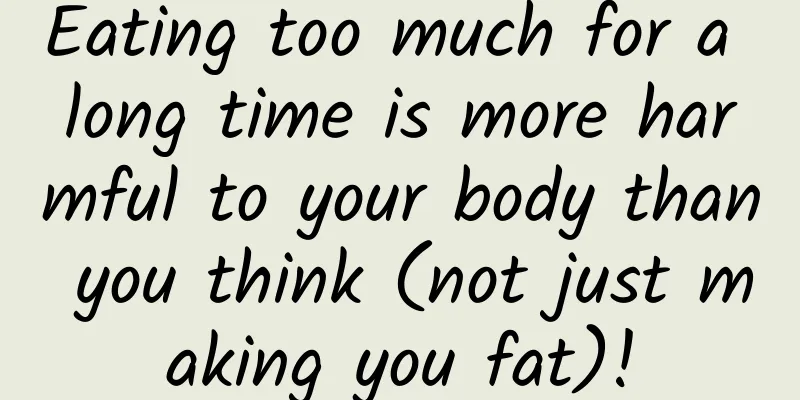The more sour the fruit, the higher the vitamin C content? It turns out that we have been eating it wrong for so many years...

|
gossip When it comes to vitamin supplements, many people think of fruit first; and when it comes to vitamin C supplements, many people think of sour fruits, such as lemons and sour oranges. Some people even believe that the sourer the fruit, the higher the vitamin C content. However, is this really the case? Copyrighted stock images, no reproduction is authorized analyze The sourer the fruit, the richer in vitamin C? Vitamin C has nothing to do with taste. Let’s first take stock of the fruits with a sour taste in our daily lives: lemon, hawthorn, passion fruit, kiwi... If we judge the vitamin C content based on the sweetness or sourness of the taste, then the vitamin C content in lemon, which ranks first in sourness, must be very high. No wonder many people slice lemons and soak them in water to drink, hoping to supplement vitamin C! However, according to the latest version of the Chinese Food Composition Table, the vitamin C content of lemon is 22 mg/100 g. This amount of vitamin C is not as high as that of Chinese cabbage, and is only 1/3 of the vitamin C content of Chinese cabbage (64 mg/100 g). [1] Copyrighted stock images, no reproduction is authorized Even when comparing fruits, the vitamin C content of lemons is not much better, and is not as high as the vitamin C content of oranges that we usually eat (33 mg/100 g) [1]. In addition, oranges are more easily accepted by the public, are easier to eat, and are easier to supplement with vitamin C. Lemons are so sour that they are only used to make lemonade or seasoning. I believe no one would eat them directly! I have seen videos of people trying to eat a whole lemon without any expression, but most of them failed. The vitamin C content of other sour fruits, passion fruit, hawthorn, and kiwi fruit, are 32 mg/100 g, 53 mg/100 g, and 62 mg/100 g respectively [1]. Among them, kiwi fruit is more suitable for supplementing vitamin C. Eating two kiwi fruits a day can almost meet the daily vitamin C requirement. Although hawthorn seems to have a decent vitamin C content, it is high in calories. Every 100g of hawthorn has 102kcal, which is 1.7 times the calories of kiwi fruit (61kcal/100g)[1]. If you want to get enough vitamin C for a day by eating hawthorn, you need to eat 200g. Eating so much hawthorn may make you fat! The source of fruit sourness - organic acids In fact, the sour taste of fruit does not come from vitamin C, but is determined by the organic acids in the fruit. If the organic acid content is high and the sugar content is low, the fruit will taste sour. Copyrighted stock images, no reproduction is authorized Different organic acid components in fruits have different effects on the sourness of the fruit. Fruits with high citric acid content have a sour taste; fruits with high tartaric acid content have a sour taste with a slightly astringent taste; fruits with high malic acid content have a sour taste with a slightly bitter taste. [2] Which fruits supplement vitamin C and how much is appropriate to eat? The following five types of fruits are recommended for supplementing vitamin C[1]: Winter dates (243mg/100g): 3-4 medium-sized ones Kiwi fruit (62 mg/100 g): 2 pieces Strawberries (47 mg/100 g): about 10 medium-sized ones Grapefruit (36 mg/100 g): half a grapefruit Orange (33mg/100g): 2 in conclusion It is not reliable to judge the vitamin C content of fruits by their sweet and sour taste. A sour taste does not mean that the vitamin C content is high. If you want to supplement vitamin C, you can choose the above 5 fruits. References: [1] Yang Yuexin. Chinese Food Composition Table 6th Edition Volume 1[M]. Peking University Medical Press, 2018 [2]. Zheng Lijing, Nie Jiyun, Yan Zhen. Research progress on sugar and acid components and their effects on fruit flavor[J]. Journal of Fruit Science, 2015, 32(2):304-312. Author: Xue Qingxin, member of Chinese Nutrition Society, registered nutrition technician, health manager, public nutritionist Reviewer: Gao Chao, Associate Researcher, Institute of Nutrition and Health, Chinese Center for Disease Control and Prevention Editor|Wang Ti The article is produced by "Science Refutes Facts" (ID: Science_Facts). Please indicate the source when reprinting. The cover image and images within this article are from the copyright gallery. Reprinting and quoting them may lead to copyright disputes. |
<<: "CT scan" 3,000 meters underwater? The ultra-deepwater exploration myth of China's "Hai Jing"!
Recommend
If we regard all the provinces in the country as a class, things will become interesting!
Mixed Knowledge Specially designed to cure confus...
The efficacy and function of golden pumpkin
The effects and functions of golden pumpkin can l...
The efficacy and function of elephant skin
Many people are not very clear about the bark of ...
PayPal: European E-Commerce Index 2022
PayPal has released its '2022 European E-Comm...
The efficacy and function of thorn flower
The environment is now seriously deteriorating an...
Hawthorn and brown sugar
Anyone who has eaten hawthorn directly should kno...
The efficacy, effects and eating methods of fresh Polygonatum odoratum
Many friends regard Polygonatum odoratum as an or...
What are the benefits of eating maca?
There are many benefits of eating maca. As a plan...
Hidden in the distant "heartland" of the Milky Way, mysterious galactic gas streams hide...
Hidden in the distant heart of the Milky Way, the...
The efficacy and function of nine-son chain grass
For the Chinese medicinal material such as Nine-C...
Heavy rain blue warning! Heavy rain and thunderstorms in Beijing, please take precautions →
Beijing Meteorological Observatory issued a blue ...
Is the Chinese medicine motherwort an anti-inflammatory drug?
Motherwort has a strong effect of promoting blood...
What is the role of vitamin B12
Nowadays, people pay more attention to their phys...
Only 1 second deviation in 7.2 billion years! Chinese scientists achieve breakthrough
On January 25, the reporter learned from the Univ...
Does not brushing your teeth properly really shorten your life?
We all know that we need to brush our teeth frequ...









